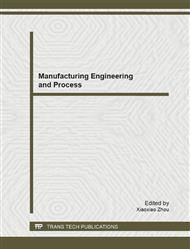p.357
p.362
p.367
p.373
p.378
p.386
p.393
p.397
p.402
Performing Balanced Ternary Logic and Arithmetic Operations with Spiking Neural P Systems with Anti-Spikes
Abstract:
Spiking neural P systems are a class of distributed and parallel computing models inspired by P systems and spiking neural networks.Spiking neural P system with anti-spikes can encode the balanced ternary three digits in a natural way using three states called anti-spikes, no-input and spikes. In this paper we use this variant of SN P system to simulate universal balanced ternary logic gates including AND,OR and NOT gate and to perform some basic balanced ternary arithmetic operations like addition and subtraction on balanced ternary integers. This paper provides an applicational answer to an open problem formulated by L.Pan and Gh. Păun.
Info:
Periodical:
Pages:
378-385
Citation:
Online since:
April 2012
Authors:
Price:
Сopyright:
© 2012 Trans Tech Publications Ltd. All Rights Reserved
Share:
Citation:


